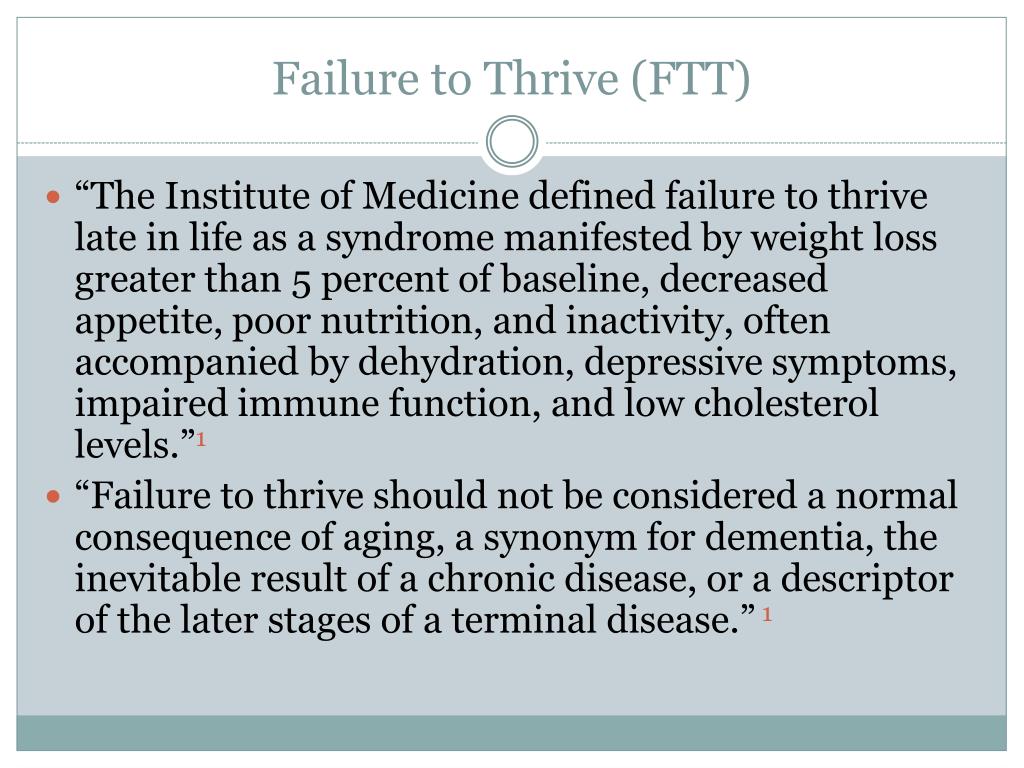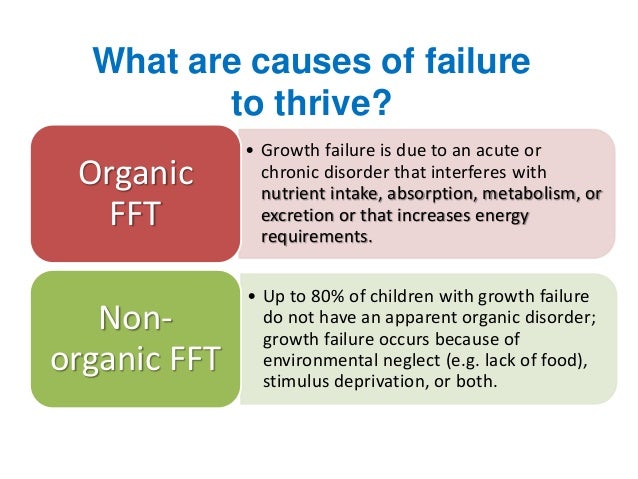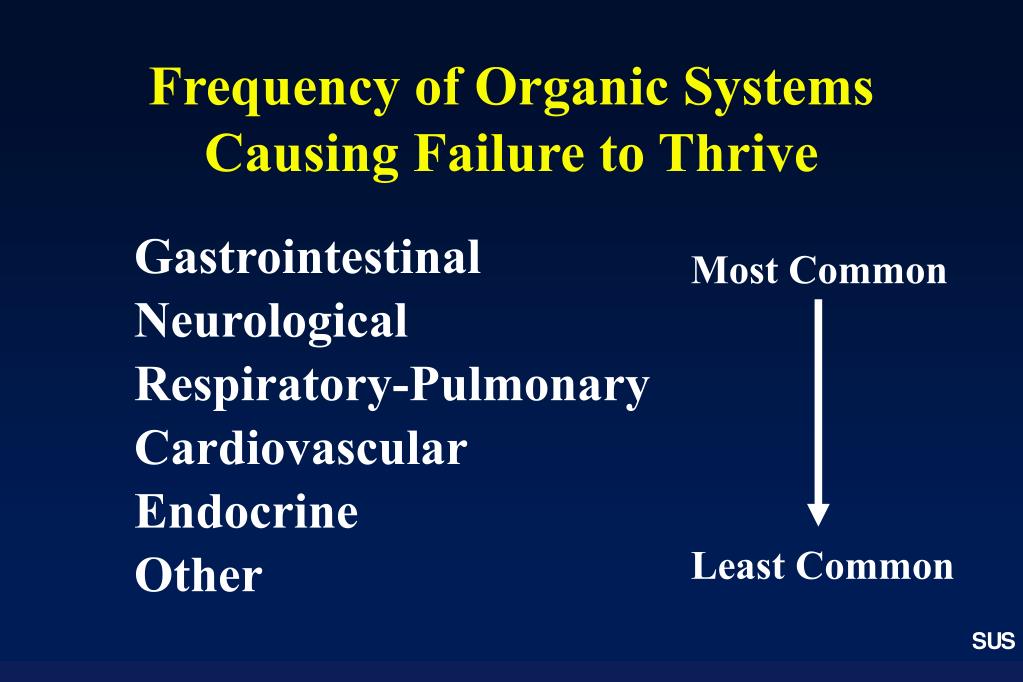
Central cyanosis may be an indicator of congenital heart disease, which may present initially as failure to thrive.Ī thorough examination of the nose, mouth and palate can help idenify structural defects which may lead to difficult feeding, such as a cleft lip or palate.

#Failure to thrive meaning infants skin
Scaling skin can indicate zinc deficiency, rough skin or brittle hair can suggest hypothyroidism, edema can indicate severe protein malnutrition. A thorough exam of the skin, hair and nails can help with the differential. All growth parameters should be plotted on a gestationally corrected growth chart.

The physical exam is very important with these patients. Some studies site a rate of Failure to Thrive among the impoverished of as high as 10%. Inadequate access to food, parental depression or drug abuse, and serious parental discord can all affect the frequency of feedings. Common problems include overdilution of formula or inappropriate soft food consistency, excessive intake of water, infrequent feedings, lack of set feeding times, distractions at mealtime and regurgitation of food.Ī thorough psychosocial history can be very revealing as well. Included in this should be where, when, how and by whom the child is fed. The physician and the parents should work together to produce an accurate account of all meals, snacks, and drinks. The most common etiologies of Failure to Thrive lie in the dietary history and relate to inadequate nutritional intake.

Important historical points which aid in diagnosis include a detailed dietary history, a detailed birth history including maternal infections and gestational age, and the age of onset of the failure to thrive if it is known. The most important initial step in the evaluation of Failure to Thrive includes a thorough history and physical examination. Thus, the etiology may be related to total parenteral intake, to the uptake and/or metabolism of that intake, or to structural abnormalities. One way to approach the evaluation of failure to thrive is to consider that the underlying issue is typically a variant of the same basis principle: inadequate usable nutrition. Typically, weight is affected before length, with head circumference being the last measurement affected. There is no concensus for the parameters of diagnosis, but common metrics for diagnosis include weight below the 2nd percentile on more than one occasion, or weight dropping more than 2 percentile groups. Illness (respiratory infections, gastroenteritis, fevers, fussiness or irritability), recurrent illness, ‡ travelĮmergency department and office visits, hospitalizations, parasite exposure, exposure to endemic illnesses (e.g.Failure to thrive is a clinical diagnosis which is often an indicator of difficulty with feeding but may also be sign of another underlying pathologic issue. It is characterized by inadequate weight gain when correcting for the child's gestational age, gender, and any relevant medical condition. Poor parenting skills, lack of attachmentįinancial and emotional support for child and family Safety and comfort, ability of parents to provide appropriate nutrition

Genetic short stature, constitutional growth delay Use of Women, Infants, and Children program, social workers, and home health visits access to food suppliesĪtopy, * food allergies, † gastroesophageal reflux, urinary tract infections, renal tubular acidosisĬeliac disease, inflammatory bowel disease, cystic fibrosis Regular feeding routine at home and day careĬultural or religious food restrictions immigrant families may be unfamiliar with the nutritional quality of local foodsįormula mixing technique, frequency of feedings, use of baby foods and table foods Primary care physicians can effectively treat most children with FTT, and subspecialist consultation or hospitalization is rarely indicated. In most cases, an appropriate growth velocity can be established with outpatient management based on proper nutrition and family support. Early identification and management of the issues causing undernutrition are critical. Difficulty attaining or maintaining appropriate weight is the first indication of FTT, and sustained undernutrition can impede appropriate height, head circumference, and the development of cognitive skills or immune function in extreme cases. Inadequate caloric intake is the most common cause of FTT, but inadequate nutrient absorption or increased metabolism is also possible. If confirmed by repeated valid measurements, FTT should prompt a search for causes of undernutrition, including neglect, family food insecurity, and underlying medical conditions. Children with very low weight for age or height and those who do not maintain an appropriate growth pattern may have failure to thrive (FTT), also known as weight faltering.


 0 kommentar(er)
0 kommentar(er)
